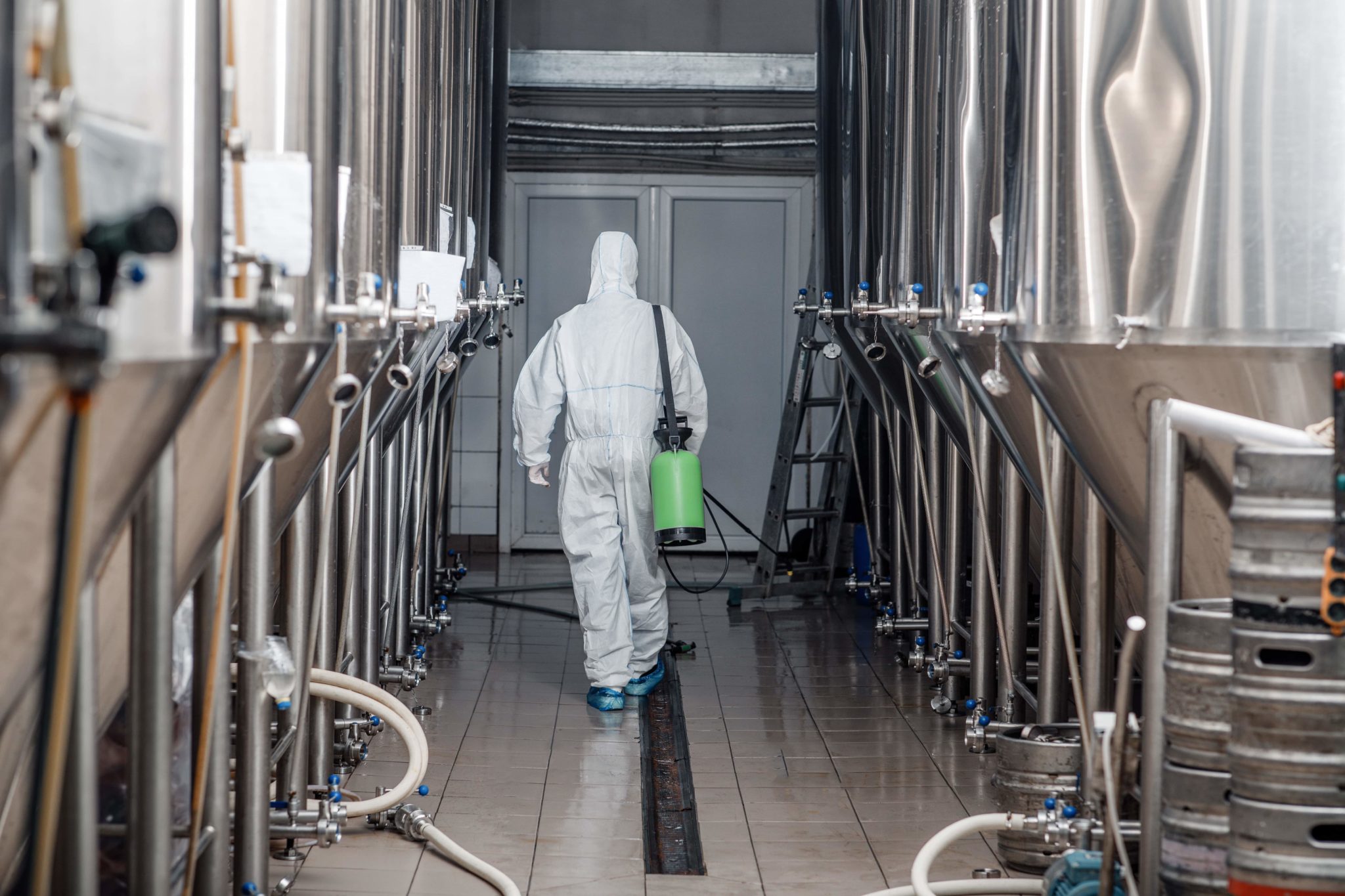
-
2025-03-13
- 0 Comment
Disinfection in Industrial Plants
The pandemic has highlighted the crucial role hygiene plays in safeguarding health and safety. Many people have integrated disinfecting door handles and floor areas in entryways into their routine cleaning. These surfaces are more frequently exposed to dangerous pathogens. However, some industries have always adhered to the highest hygiene standards, even before the pandemic’s pressures.
In the food industry, maintaining cleanliness is a priority, and any lapses in hygiene can cost human health or even lives.
When is Disinfection Required in the Food Industry?
Maintaining the highest level of hygiene in the food industry is essential and is governed both by legal regulations and internal plant procedures. Cleanliness at every stage of the production process is crucial to maintain high production standards.
Food production is inherently associated with various types of contaminants, including fats, spices, organic matter, glazes, and harmful allergens. These must be effectively removed through appropriate cleaning and disinfection methods. Keeping machines clean is also vital for ensuring the smooth flow of production.
What is Disinfection?
Disinfection is defined as the process of removing microorganisms and their spores (such as eggs, spores, etc.) from objects and surfaces. It effectively removes their vegetative forms, although sometimes it may not completely eliminate spore forms. Therefore, disinfected items are not entirely sterile.
Effective Disinfection Methods
Disinfection methods for rooms and surfaces used in the food industry can be categorized into three types: physical, chemical, and thermo-chemical.
Physical Factors for Disinfection:
- Steam at temperatures of 100–105°C under pressure.
- UV radiation with a wavelength of 256 nm, which is used for air or surface disinfection, particularly in areas that are not shielded.
Chemical Disinfectants:
- Phenolic compounds.
- Heavy metal compounds (e.g., silver).
- Halogen compounds.
- Crystal violet, ethacrynic acid.
- Oxidizers such as potassium permanganate and ozone.
- Surfactants (e.g., soaps).
- Acids and bases.
- Alcohols (e.g., ethanol).
- Aldehydes (e.g., formaldehyde).
- Quaternary ammonium salts.
How Disinfection is Conducted?
In food production facilities, all stages of cleanliness, as well as cleaning and disinfection of machines and surfaces, are strictly defined by law and established procedures. Adhering to these procedures ensures that dangerous situations are avoided, which could pose risks to workers and consumers.
Anyone entering the production area must follow hygiene rules, including mandatory hand disinfection. By maintaining these rigorous standards, food safety is ensured, preventing potential contamination of products and upholding public health.
Disinfection – Step by Step
Machines designated for cleaning and disinfection must be disassembled. Then, visible contaminants are removed, usually using large amounts of water, along with the appropriate tools and chemicals, depending on the type of contamination. The actual cleaning process is carried out using chemical agents that eliminate the identified types of microorganisms present on the surface. It is equally important to rinse these surfaces, as the chemicals may pose a potential risk of food contamination. Often, drying of the cleaned surfaces is required. The use of biodegradable organic acids with disinfectant properties does not require rinsing.
Following the procedures is not a guarantee of effective disinfection. Therefore, each cleaning process is monitored with the use of appropriate microbiological tests by qualified personnel. Only after confirming the effectiveness of the entire process can production be resumed.
Benefits of Disinfection
The disinfection process should be part of the daily routine in the plant. The quality of the product, which builds the brand’s reputation, depends on it. Gaining the sympathy and trust of customers translates into purchasing decisions and consequently increases sales.
Disinfection also brings the benefit of enhanced safety and hygiene at the workplace. Employees working with clean surfaces are not exposed to contact with harmful pathogens, which, despite personal protective equipment, could pose a threat. Maintaining cleanliness in a food production facility ensures the safety and high quality of the products. It also provides peace of mind during inspections, such as from health authorities, and reduces the risk of food contamination, the consequences of which are difficult to predict.
